A Wild Herb Delight
Bärlauch is a wild herb that is as flavourful as it is versatile. Also known as wild garlic or ramsons, Bärlauch is a plant that grows in the forests of Europe, particularly in the spring. It is a wild relative of chives.
Its delicate leaves and pungent aroma make it a favourite among foragers and chefs.
Bärlauch has a unique flavour profile, a delightful blend of garlic, onion, and a hint of pepper. Its vibrant green leaves are tender and aromatic, making them a perfect addition to a variety of dishes. From soups and salads to pesto and sauces, Bärlauch adds a burst of freshness and depth of flavour that elevates any recipe. Whether used as a garnish or as the star ingredient, Bärlauch never fails to impress with its bold taste and vibrant colour.
Not only is Bärlauch delicious, but it also boasts a range of health benefits. Rich in vitamins, minerals, and antioxidants, Bärlauch is believed to have anti-inflammatory and antibacterial properties.
It has been used in traditional medicine for centuries to boost immunity, aid digestion, and promote overall well-being.
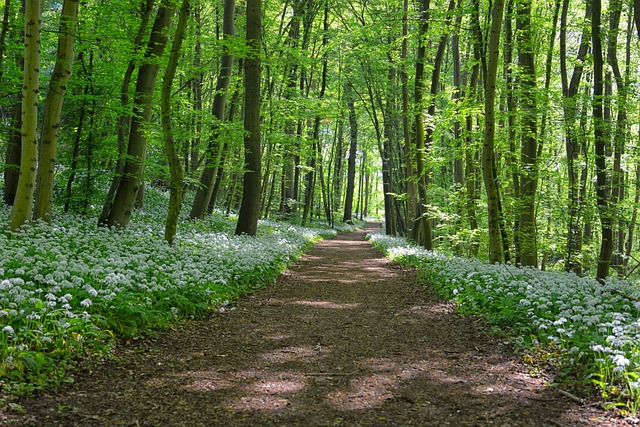
From Forest to Fork: Bärlauch Recipes to Savour
One of the joys of Bärlauch is its versatility in the kitchen. Whether you prefer simple and quick recipes or more elaborate dishes, there is a Bärlauch recipe to suit every taste and skill level.
Some popular dishes include Bärlauch pesto, Bärlauch soup, Bärlauch risotto, and Bärlauch butter. The possibilities are endless when it comes to incorporating this wild herb into your cooking. But before you grab your foraging basket please read our warnings first!!
Recipe inspiration can be found on Chefkoch
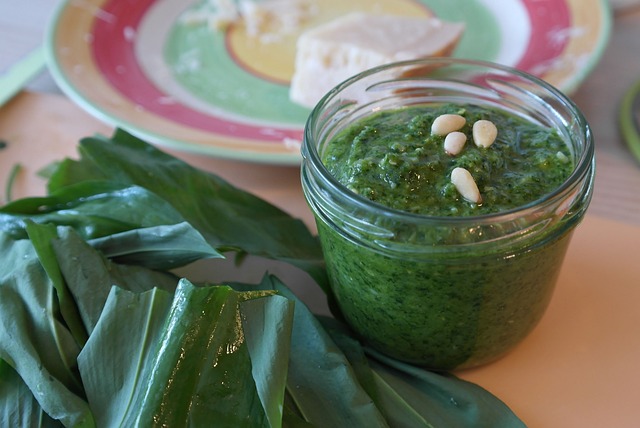
Warning
While this aromatic herb can add a delicious touch to your culinary creations, it’s essential to be cautious when harvesting it in the wild. It is crucial to be aware that this wild herb bears a striking resemblance to toxic plants such as Lily of the Valley (Maiglöckchen) and Autumn Crocus (Herbszeitlose).
Consuming these poisonous look-alikes can result in severe health complications.
Wild garlic can be bought at markets and we do not recommend harvesting Bärlauch yourself.
To avoid any potential mix-ups, always double-check the distinctive scent and leaf shape of true Bärlauch before adding it to your meals.
If you do decide to harvest Bärlauch yourself, consider doing it with someone who is experienced in “Bärlacuhsammeln” and only pick one leaf per plant to preserve and protect the plant. Make sure you wash the leaves before consumption.
It is also important to remember that not everyone may react well to its potent aroma. Some individuals may experience digestive discomfort or allergic reactions when consuming wild garlic, so it’s advisable to start with small amounts and monitor your body’s response. If you’re unsure about how your body will react to Bärlauch, consult with a healthcare professional before incorporating it into your diet.
The Landwirtschaft Verstehen website has a great infographic to explain the differences
Festivals
Germany is renowned for its vibrant festival culture and of course, there are festivals celebrating Bärlauch, ensuring you enjoy the beloved herb in all its forms. A list of Bärchlauch festivals is available on the Hortipendium Website
Related content
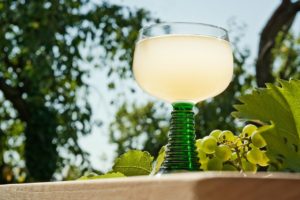
Besenwirtschaft
A different type of Gemütlichkeit awaits you at Besen. It is a wonderful way to meet up with friends. A Besenwirtschaft, also known as a
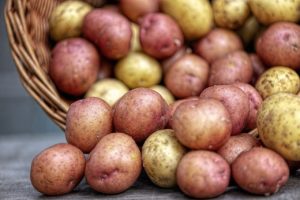
Potatoes
Potatoes are staple food in Germany. You will find it as a side to almost any dish you order in a restaurant. The good news
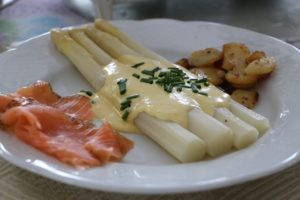
Spargel – the German white gold
Bis Johanni – nicht vergessen – sieben Wochen Spargel essen! The Asparagus season in Germany starts towards the end of April and ends on the


You must be logged in to post a comment.